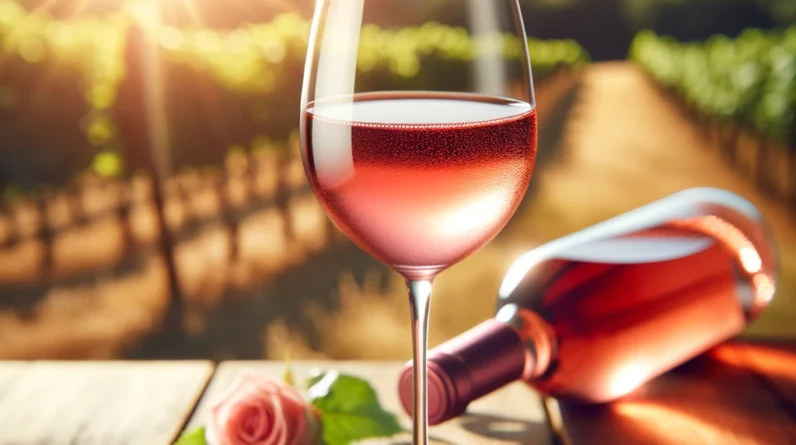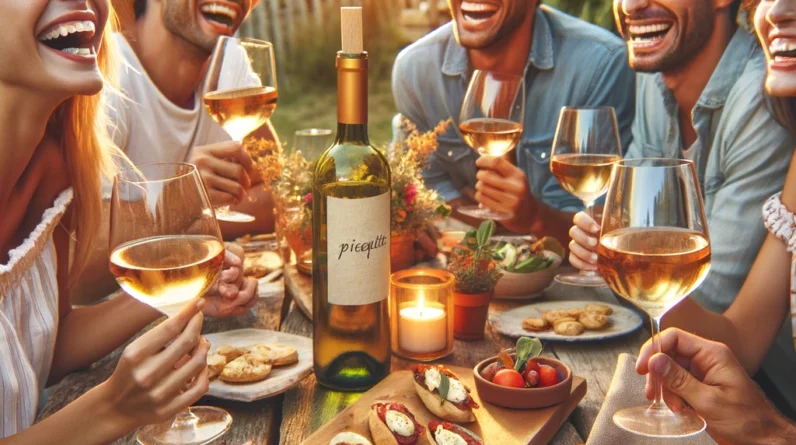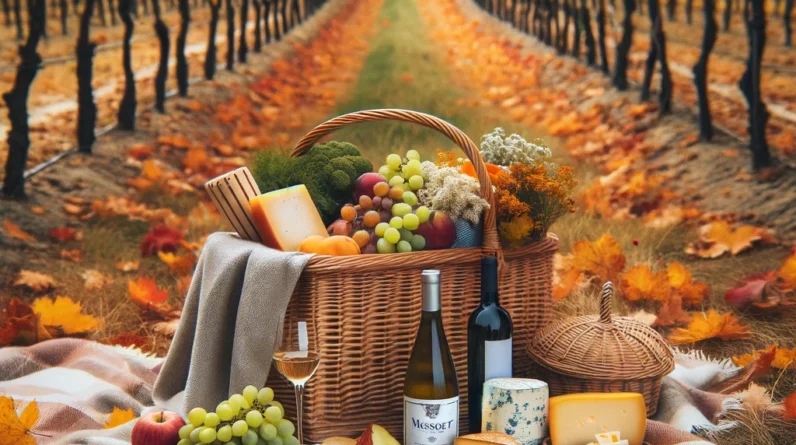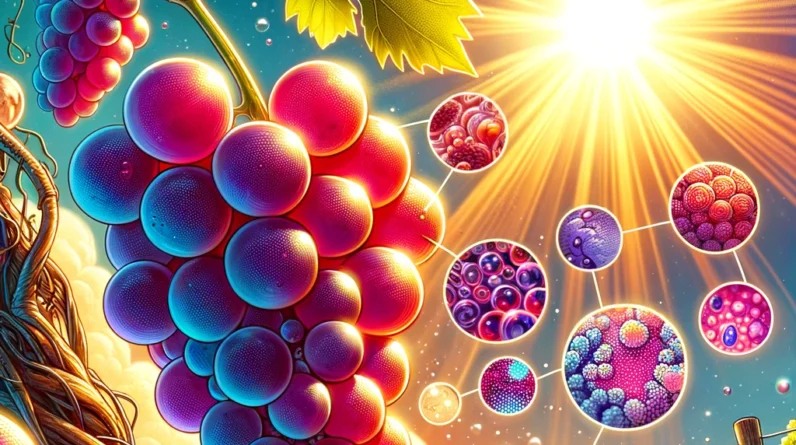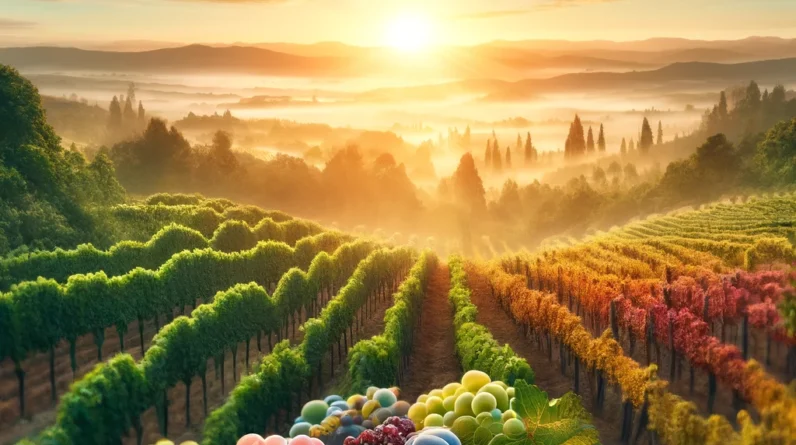
Unveiling the World of Hybrid Grapes: A Wine Revolution
Welcome to the intriguing world of hybrid grapes—a frontier where tradition meets innovation in the vineyard.
As the wine industry faces challenges from climate change and sustainability concerns, hybrid grapes emerge as heroes.
With their unique origins, resilience, and exciting flavor profiles, they’re redefining what’s possible in a glass of wine.
Let’s uncork the story of these versatile vines, exploring how they’re shaping the future of winemaking and tantalizing the palates of wine lovers around the globe.

The Dawn of Hybrids: Why They Matter
In the lush, sprawling vineyards that carpet landscapes from the rolling hills of France to the sun-drenched valleys of California and beyond, a subtle yet profound transformation is underway.
This transformation, though quiet, is as revolutionary as the introduction of steel vats or the advent of organic viticulture.
At the heart of this revolution are hybrid grapes, nature’s innovative solution to the wine industry’s contemporary challenges.
Hybrid grapes emerge from the intricate dance of cross-pollination between different grape species, a testament to both human ingenuity and nature’s versatility.
Unlike traditional breeding, which confines itself within the boundaries of a single grape species, hybridization breaks these boundaries, merging the best traits of each parent species.
This process is not just about creating new grape varieties; it’s a deliberate effort to sculpt the future of winemaking.
The promise of hybrid grapes extends far beyond their novelty.
They are bred for resilience, armed with the genetic arsenal to withstand pests that would otherwise devastate traditional vines.
This resilience translates into fewer chemical interventions required to maintain healthy vineyards, aligning with a growing demand for more natural, sustainable wine production practices.
Moreover, these grapes are champions of adaptability, thriving in climates where classic vinifera grapes struggle to survive.
As the planet warms and weather patterns shift unpredictably, the ability of hybrids to flourish in varied environmental conditions makes them invaluable assets in the global fight against climate change’s impact on viticulture.
But the allure of hybrid grapes isn’t solely rooted in their toughness or environmental friendliness.
These grapes bring to the table an exciting palette of flavors and aromas previously unexplored in the wine world.
From vibrant, fruit-forward profiles to complex, earthy notes, hybrids expand the sensory repertoire of winemakers and wine lovers alike.
They offer a new dimension of tasting experiences, challenging traditional palates and inviting exploration into uncharted territories of wine flavor and bouquet.
This quiet revolution brewing in the vineyards worldwide is a beacon of hope and innovation.
Hybrid grapes embody the wine industry’s adaptability, resilience, and unending quest for excellence.
They are not just an answer to the modern challenges of winemaking; they are a celebration of the diversity and richness that the future of wine has in store.

What Are Hybrid Grapes?
Hybrid grapes are essentially a mix, combining the traits of two or more grape types.
Picture them as nature’s own blend, much like a cultural exchange but for grapes.
This blend brings together different grape families, sharing their best qualities to produce something truly special and unique.
By merging these varieties, hybrids gain strengths from both sides.
This could mean better resistance to diseases, the ability to thrive in a wider range of climates, or even unique tastes and aromas that you won’t find in other grapes.
It’s a bit like taking the best parts of your favorite fruits and creating a super fruit that can stand up to more challenges and tastes amazing.
The creation of hybrid grapes isn’t random; it’s a thoughtful process.
Scientists and viticulturists carefully select which grape varieties to cross.
They look for specific traits, like hardiness, flavor, or growth habits, that would complement each other.
This meticulous selection ensures that the resulting hybrid grape brings something new and beneficial to the table.
For example, one parent grape might be incredibly flavorful but susceptible to a common vineyard pest.
The other parent could be resistant to that pest but lack the desired flavor complexity.
When crossed, their offspring could inherit the pest resistance from one parent and the rich flavor from the other.
The result? A grape that’s both delicious and more sustainable to grow.
Hybrid grapes represent innovation in the wine world.
They are proof that with creativity and science, the boundaries of winemaking can expand.
These grapes introduce wine lovers to new tastes and open up possibilities for winemakers to grow grapes in challenging environments.
They’re not just the future of wine; they’re making the wine world more exciting right now.

The Drive for Innovation and Sustainability
Winemakers are turning to hybrid grapes for a very important reason: sustainability.
Our planet’s climate is changing fast, making it harder for traditional grape varieties to thrive.
These changes can lead to poor harvests and less reliable wine production. Enter hybrid grapes.
They’re like a superhero team for winemakers, equipped with special powers to deal with these challenges.
First off, hybrids are tough. They’re bred to resist common vineyard diseases that would usually require lots of chemicals to control.
This means winemakers can use fewer pesticides, making their vineyards healthier for the environment. It’s a win-win situation.
The vines stay healthy, and the soil and surrounding ecosystem do too.
Hybrids also handle weird weather like champs. Hotter summers, unpredictable frosts, and sudden downpours can wreak havoc on traditional vines.
But hybrid grapes? They’ve got this.
Their genetic diversity often gives them the upper hand in adapting to these extreme conditions, ensuring that winemakers can still produce great wine, even when the weather doesn’t cooperate.
But it’s not just about making it through tough times.
Hybrids are part of building a wine industry that can last long into the future without harming the planet.
They’re about finding a balance between what we take from the earth and what we give back.
Using hybrids means we can keep enjoying wine, knowing that we’re also protecting the environment.
In essence, hybrids are not just a stopgap measure; they’re a proactive step towards a greener, more sustainable way of making wine.
They offer a path forward that respects the earth and ensures that the wine industry can continue to flourish for generations to come.
Winemakers are not just bothering with hybrids; they’re embracing them as a crucial part of the future of wine.
Still looking for that perfect wine glass?
Tasting the Difference
When it comes to wine, taste is everything. And that’s exactly where hybrid grapes shine.
They’re like a treasure chest of new flavors, waiting to be discovered.
These unique grapes can transform your wine glass into a world of taste adventures.
Imagine sipping a wine that dances between fruity and floral notes, then surprises you with a hint of spice or an earthy depth.
That’s the magic hybrids can bring.
Each variety offers a different mix of flavors, making every sip a chance to explore something new.
It’s like being a taste explorer, journeying through uncharted flavor landscapes with each glass.
Hybrid grapes don’t just stick to the script of traditional wine flavors.
They write their own stories, mixing and matching tastes in ways that can startle and delight even the most experienced wine lovers.
This isn’t just another bottle of wine; it’s a passport to sensory discovery.
For enthusiasts, these new flavors are an invitation to expand their wine knowledge and palate.
It’s a chance to learn, experiment, and find new favorites. And for casual drinkers?
Hybrids offer a fun, approachable way to dive deeper into the world of wine.
They make wine tasting less about following the rules and more about personal enjoyment and discovery.
In essence, hybrid grapes are challenging the status quo of wine, pushing boundaries, and asking us to think differently about what wine can be.
They encourage us to be curious, to taste without preconceptions, and to appreciate the diverse bounty that vineyards can produce.
So, let’s raise a glass to hybrid grapes—for bringing innovation, excitement, and a whole new range of flavors to the wine-tasting experience.

Navigating the Debate
Hybrids are at the center of a lively debate within the wine world.
On one side, you have the purists. These are the folks who cherish wine’s rich history and time-honored traditions.
They see hybrid grapes as a step away from the classic winemaking practices that have been perfected over centuries.
To them, wine is about heritage, and hybrids seem like a departure from this legacy.
Then, there are the innovators. These individuals look forward, always searching for ways to improve and adapt.
They view hybrid grapes as a breakthrough, a necessary evolution in the face of changing climates and environmental challenges.
For innovators, hybrids represent progress, offering a sustainable future for winemaking that doesn’t sacrifice quality or flavor.
This debate isn’t just about grapes; it’s a reflection of a larger conversation happening in kitchens and dining rooms around the world.
It’s the classic clash between evolution and tradition that touches everything from cooking techniques to ingredients.
Hybrids bring this conversation to the vineyard, sparking discussions about what we value in the foods and drinks we love.
What makes hybrids such a hot topic is that they sit at the intersection of science and art.
They challenge us to think about how much we’re willing to change to preserve what we love.
Can we hold onto the soul of winemaking while embracing new methods that ensure its future?
It’s a question without easy answers, but it’s one that makes hybrids endlessly intriguing to talk about.
In the end, the debate over hybrids is a sign of a vibrant, passionate wine community.
Whether you stand with the purists or the innovators, the conversation about hybrids encourages us all to think more deeply about the wines we drink and the legacy we want to leave in the bottle.

Exploring Hybrid Varieties
If you’re looking to dip your toes into the world of hybrid wines, you’re in for a treat. Let’s talk about Chambourcin, Marquette, and Traminette.
These aren’t your everyday grape varieties, but they’re quickly making a name for themselves.
They stand at the forefront of a thrilling new movement in winemaking, combining flavor innovation with eco-friendly practices.
Chambourcin is a red wine lover’s delight.
It offers a deep, rich color and a flavor profile that can range from plush, juicy dark fruits to hints of spice and earthiness.
It’s a versatile grape that adapts well to different climates, making it a star in regions where classic varieties might struggle.
Marquette, another red variety, is earning accolades for its robustness and adaptability.
Its wines are known for their complex bouquet of red and black berries, accented with touches of pepper and spice.
Marquette vines are hardy, resistant to cold, and less prone to disease, embodying the sustainable spirit of hybrid grapes.
Then there’s Traminette, a white grape variety that enchants with its floral aromas and flavors of stone fruit, honey, and sometimes a crisp, spicy edge.
It’s a grape that brings a touch of elegance and refinement to the table, proving that hybrids can stand shoulder to shoulder with the classics in terms of taste and sophistication.
These varieties might still be under the radar for many wine drinkers, but they represent the cutting edge of a winemaking revolution.
They’re not just about creating sustainable wines; they’re about offering new sensory experiences, pushing the boundaries of flavor, and challenging our expectations of what wine can be.
Exploring wines made from Chambourcin, Marquette, and Traminette is more than just a taste adventure.
It’s a way to support innovative practices in the wine industry, contributing to a more sustainable and exciting future for wine lovers everywhere.
So, next time you’re browsing the wine aisle, keep an eye out for these trailblazers. You might just discover your new favorite wine.
| Name | Type | Qualities | Tasting Notes | Where They Grow |
|---|---|---|---|---|
| Chambourcin
| Red | Disease resistant, versatile in winemaking | Dark fruit, spicy, sometimes earthy | USA, Australia, parts of Europe |
| Marquette
| Red | Cold hardy, disease resistant | Cherry, blackberry, pepper, spice | Northern USA, Canada |
| Traminette
| White | Aromatic, disease resistant | Floral, honey, apricot, spicy undertones | USA, particularly in Eastern and Midwestern states |
| Vidal Blanc
| White | Cold hardy, good acid balance | Crisp, peach, citrus, and tropical fruit | Canada, Northeastern USA |
| Frontenac
| Red | Cold tolerant, versatile for red wines | Cherry, blackberry, with earthy undertones | USA, Canada |
| Seyval Blanc
| White | Cold hardy, versatile in style | Crisp, green apple, citrus, mineral | USA, Canada, UK |
Why Should You Care?
Hybrid grapes are more than just an interesting twist in the story of winemaking.
They’re a beacon for anyone looking to blend their love for wine with a commitment to the planet.
If you’re someone who thinks about the environmental impact of your choices, hybrids speak your language.
They’re crafted with the future in mind, requiring fewer chemicals and less intervention from growers.
This means each bottle is a step towards a healthier Earth.
But it’s not just about being green. For those who crave novelty and excitement, hybrid wines are like a treasure map to uncharted taste territories.
They invite you on a journey through flavors and aromas you won’t find in more traditional wines.
Every sip is an adventure, a chance to explore the new and unexpected. It’s an invitation to challenge your palate and expand your wine horizons.
The wine industry, facing its own set of challenges from climate change to shifting consumer preferences, finds a lifeline in hybrid grapes.
These grapes are like a toolkit for resilience, offering a way to keep traditions alive while adapting to modern demands.
They’re a bridge between the old and the new, ensuring that winemaking can continue to thrive and evolve.
In essence, hybrid grapes are a triple threat. They’re a nod to the eco-friendly drinker, a thrill for the taste explorer, and a helping hand to an industry in flux.
They represent a harmonious blend of respect for the environment, a zest for exploration, and a vision for a sustainable future.
Whether you’re sipping for pleasure, adventure, or out of environmental concern, hybrids offer a glass filled with more than just wine—they offer a taste of the future.

The Future in a Glass
Hybrid grapes represent much more than the latest trend in viticulture; they’re a testament to the power of human ingenuity and nature’s flexibility.
These grapes stand as living proof that when faced with challenges, both the natural world and human creativity can conjure up remarkable solutions.
As people learn more about these unique varieties, their popularity is bound to increase.
This growing interest can lead to a significant shift in how we think about and produce wine.
By embracing hybrids, the wine world can become a place of greater variety, where every bottle tells a story of overcoming adversity and embracing change.
These innovative grapes can also lead to a wine industry that’s better equipped to deal with the uncertainties of climate change.
Their ability to resist diseases and adapt to different environments makes them a valuable ally in ensuring that vineyards can continue to produce high-quality grapes, no matter what the future holds.
Moreover, the move towards hybrid grapes can spur a more sustainable approach to winemaking.
With less reliance on chemicals and interventions, vineyards can become healthier ecosystems that contribute to the overall wellbeing of our planet.
In short, hybrid grapes are much more than just a new option for wine producers and enthusiasts.
They symbolize a shift towards a more adaptable, innovative, and sustainable winemaking practice.
As awareness and appreciation of these grapes grow, they have the power to transform the wine landscape into something even richer and more resilient.
Conclusion
Hybrid grapes stand at the crossroads of tradition and innovation, offering a glimpse into the future of winemaking.
They’re not just a response to environmental challenges; they’re a testament to the industry’s adaptability and commitment to sustainability.
By embracing the diverse flavors and sustainable benefits of hybrid grapes, we join a movement that honors the past while sipping towards a more resilient and vibrant future.
So, raise a glass to hybrid grapes—the unsung heroes of the vineyard, bridging worlds and bringing new dimensions to our wine experiences.
FAQs:
Q1: What exactly are hybrid grapes?
Hybrid grapes result from crossbreeding two or more grape varieties, combining traits from each parent to create grapes that are resilient to climate change, disease, and pests, while also introducing new flavors to the wine world.
Q2: Why are hybrid grapes important?
They represent a step towards sustainable winemaking by offering resistance to diseases and pests, requiring fewer chemical treatments, and adapting better to changing climate conditions.
This not only helps in preserving the environment but also ensures the future of winemaking.
Q3: Do hybrid grapes taste different from traditional grapes?
Yes, hybrid grapes can introduce unique flavor profiles that range from fruity and floral to earthy and spicy.
They expand the sensory experience of wine, offering new tasting adventures for wine enthusiasts.
Q4: Are wines made from hybrid grapes of good quality?
Absolutely. While taste is subjective, wines made from hybrid grapes can be of high quality, offering complex flavors and aromas that stand on par with wines from traditional grape varieties.
Their quality continues to improve as winemakers gain more experience and understanding of these grapes.
Q5: Can hybrid grape wines be found easily?
Availability varies by region, but as awareness and demand increase, more wineries are producing wines from hybrid grapes.
They are becoming more common in wine shops and on menus, particularly in regions where hybrids thrive.
Q6: Are hybrid grapes better for the environment?
Yes, by requiring fewer chemical treatments and being more resilient to diseases and pests, hybrid grapes reduce the environmental impact of grape growing.
This aligns with a more sustainable and eco-friendly approach to winemaking.
Q7: Is there resistance to hybrid grapes in the wine industry?
Some traditionalists view hybrid grapes with skepticism, preferring the established prestige of traditional varieties.
However, as the benefits of hybrids become more apparent, acceptance is growing, particularly among forward-thinking winemakers and environmentally conscious consumers.
Q8: How can I explore hybrid grape wines?
Start by visiting local wineries or wine shops that focus on sustainable and innovative winemaking practices.
Ask for recommendations on hybrid grape wines and look for tastings or wine club selections that feature these unique varieties.
Q9: Will hybrid grapes replace traditional grape varieties?
Not replace, but complement. Hybrid grapes offer alternatives that can thrive in conditions where traditional varieties may struggle, contributing to the diversity and sustainability of the wine industry without overshadowing the cherished traditions of winemaking.


